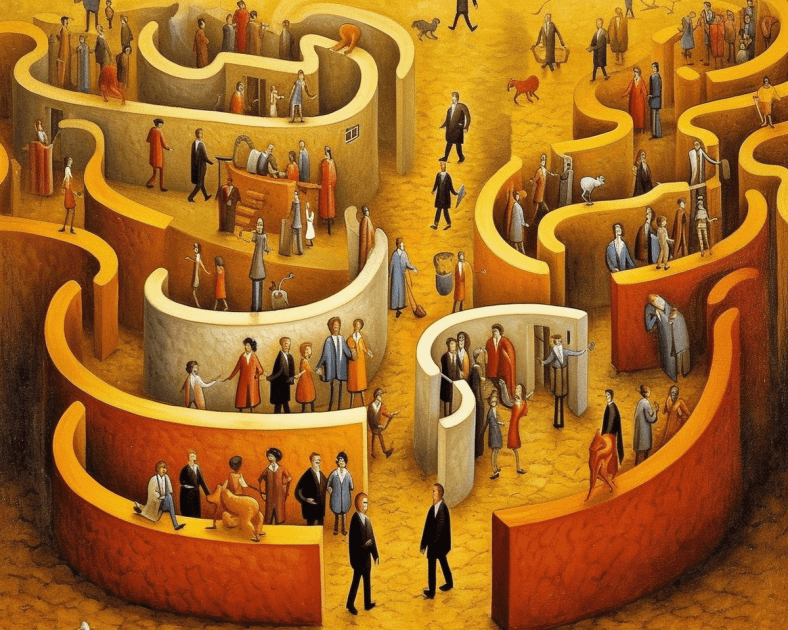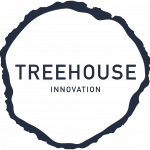What’s your problem?
Steve is part of the leadership team at Treehouse Innovation, an expert facilitator and design thinking specialist. Steve has worked with clients including Accenture, Google, Janssen, Salesforce and DLA Piper. He specialises in working with people to develop the leadership, teamwork and innovation skills they need to succeed. He is passionate about helping leaders and their teams design great products and services, provide rewarding careers, and solve strategic organisational problems.
Leadership has always been difficult, but it’s perhaps more challenging now than it has ever been. Problems abound for leaders, whether it’s managing teams in a hybrid world, dealing with economic pressures like inflation and increasing interest rates, or global issues like the war in Ukraine and climate change. With so many issues to deal with, knowing how to solve problems, and how to help others tackle issues that arise, is a key part of a leader’s toolkit.
In this piece, I’m going to set out the three types of problems leaders face, and how to solve them. Most importantly, I’m going to discuss why it’s so important to the success of organizations that leaders understand what kind of issue they’re facing, and the path they should take to find the right answers.
Firstly, let’s look at the three kinds of problems leaders come up against, and the approaches to use to solve them.
1. Simple problems
…are those that we have seen before and solved many times. They can typically be solved with straightforward solutions, usually through a predefined set of rules or procedures. These problems are well-structured and often only involve a few elements and have clear cause-and-effect relationships between those elements. Simple problems can be solved relatively quickly, and once a solution is found, it can be applied consistently in the future – such problems are the domain of best practice. Examples of simple problems include inventory management, onboarding suppliers, processing a customer order etc.
2. Complicated problems
…are those that may be beyond our personal experience. They typically involve multiple steps, processes, or subsystems. Cause and effect relationships in complicated problems are knowable in advance but require experience. Complicated problems require analysis, take time to solve and often don’t have one obvious answer – they are the realm of expertise and good practice. Examples of complicated problems include implementing an IT system, moving offices, hiring employees etc.
3. Complex problems
…are those that are inherently unpredictable, with many interrelated components and non-linear relationships that create unpredictable and unstable outcomes. These problems are often dynamic and change over time, making it difficult to find a single, definitive solution. Cause and effect are knowable, but only after the fact. Expertise and best practice don’t work here. We need to explore multiple perspectives, identify a range of possible solutions and test and learn to find what works best. Solutions to complex problems may be temporary and may need to be adjusted as circumstances change. Examples of complex problems include developing and launching new products and services, merging teams, divisions or businesses, responding to changes in the demands of customers, regulators or other stakeholders, and changing the culture of an organization.

Sticking with tried and tested approaches in complex situations can lead to a whole host of issues for businesses, from underperformance to inefficiencies and missed opportunities in the short term, to corporate failure down the line. The list of companies who’ve failed trying to deal with an unpredictable future by continuing to apply their current thinking and best practices is a long one. Kodak, Blockbuster, Myspace, Thomas Cook are all organizations who were too slow to adapt to complex, changing marketplaces.
When simple or complicated problems come up, we generally know how to solve them.
You can be fairly certain every time you change a tyre that if you follow the process, it will work. You don’t need to go out and ask other people for their input. It’s comforting to be able to have some certainty about the world, and to rely on your own knowledge and experience. But in complexity, that certainty just isn’t there. If you take a complex problem and try to solve it with best practice, you will fail.
For example, imagine your challenge is to achieve culture change across your organization. You want to become an innovation-centred organization, to be good at spotting what customers in your sector want and need, and delivering it to them. Best practice might tell you that to make decisions about the running of your organization, you need to take a top-down approach. But companies that rely on the expertise of the people at the top are much less likely to be as innovative as those who are good at crowdsourcing ideas and speaking to customers to find out what’s really going on from their perspective.
We worked with a media company which realised that their reliance on ideas from the top of the business was stifling innovation and limiting the growth prospects of the organization. We helped them develop the capability to form new insights, generate multiple possibilities, and test their assumptions, leading to solutions their market really wants.
The future is more unpredictable than ever, and things are changing at a very fast pace. In such an unpredictable environment, as leaders we need to be less certain that we’re right, and more curious about other people’s perspectives. We have to take a mindset shift from ‘I must know the answer’ to ‘I need to find the answer’. It’s a subtle shift but an important one.
When we’ve made that shift, then we can start to think differently about how we tackle the problems in front of us. At Treehouse, we’ve seen time and time again that no matter what kind of complex problem a business is facing – whether it’s culture change, a new strategy, or a product or service launch – taking a human-centred approach leads to better, more innovative solutions that meet customers needs because they were designed in partnership with them.

Once you’ve identified that a problem is in the complex domain, there are three key steps to take to help you start finding solutions:
1. Examine the current state.
Listen to customers, colleagues, suppliers and other stakeholders. Gather multiple perspectives on the problem and start to make sense of what is happening. As leaders we should learn to let go of the need to be right, of knowing all the answers, of tried and tested methods and be open to discovery as we examine our problems.
2. Explore a number of possible solutions.
Because we can’t know what will work in advance with complex problems we need to position for different possible futures. We should explore a range of options that seem promising in terms of solving our problems, but not get wedded to any of them too early.
3. Experiment with the most promising ideas.
Develop rapid prototypes, test them with different users seeking feedback about what they value in your ideas and what is superfluous. Take that feedback and iterate the ideas as you develop them, creating multiple versions to test and learn, quickly, safely and at low cost. In this way when you are ready to launch your idea you will have much more confidence in its ability to solve the problem you started with.
We often hear from leaders who are frustrated that they can’t fix a problem despite having tried to solve it in multiple ways. This generally happens because organizations apply old methods to complex issues, and then expect to find simple solutions. It can be easy to think that by following a long-established approach of plowing ahead with an idea, and going through the process involved with rolling it out, that you’re making progress. But if it then falls flat on its face because it actually isn’t what the market wants, you’ve lost heaps of time and money.
Taking an agile approach to implementation allows you to be much more flexible in a complex environment, avoids waste, and leads to much more viable customer-centred solutions that ultimately enable your business to grow.
So next time a problem comes up, take some time to consider what kind of problem it is, and which approach is going to get you to a real solution.
We work alongside businesses like yours to help you think differently about the problems you’re facing, generate a multitude of possible solutions, test and refine them, so that you have the confidence that the product, service or strategy you want to launch is fit for purpose. Schedule a call with one of our team to discuss how we can help you today.



